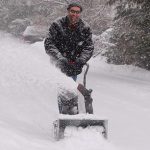The light at the end of the tunnel is becoming visible – this terrible winter is almost over. This means the next step is upon us, and that is recovering from one of the worst winters on record. Your lawn has the ability to recover on their own, but you can help them along a bit to a fuller, faster recovery. Here are some of the ways you can give your lawn a hand once the snow clears:
Leave the Chemicals in Storage
Your lawn will be weakened from the winter, and may be susceptible to invasion from weeds and bugs. However, this weakened state means that chemicals that would normally be relatively safe to use on the lawn may now be just as deadly to the lawn as to the pest they are aimed at. Give your lawn some time to get healthy before using any chemicals. This may mean it doesn’t get as green as you would like, and you may need to pull weeds by hand, but it will create a more stable, healthier lawn.
Let it Breathe
The first step in helping your lawn recover is to make sure that it can get plenty of water, oxygen, and nutrients down to its roots. Before adding anything to the lawn, rake and aerate your lawn. Raking clears away thatch that will create a barrier between the grass and the nutrients. Aerating the lawn using metal spikes on shoes, hand tools, or powered machines will create small holes in the lawn that will allow water and nutrients faster entry into the lawn.
Give it a Boost
A natural soil booster will put some life back into the soil and get beneficial bacteria that has been killed off over the winter back into the soil. Your soil booster should also include organic matter that can break down over time and also provide nutrients – usually in the form of seaweed. This soil booster will kick-start your lawn after the winter.
The First Trim
The first mowing session after winter is the most important, as it sets the base for the lawn for the summer. Find the right height for your lawn and set your blades as low as recommended, to help clear off dead growth, but without cutting the grass too short. Using a mulching blade to return grass clippings into the lawn will help provide more nutrients to the recovering lawn.
Fill in the Bare Spots
After the post-winter trim, you’ll be able to see the bare spots clearly, and address them. Over-seed the bare spots and make sure to water them as necessary to help new grass to take root.
Fertilize
The last step to recover is to start your yearly fertilization program. The best method for the first application of the year is to use natural, liquid fertilizer that will be easy to spread evenly and that will be absorbed into the turf faster and more thoroughly than solid fertilizer.
By following these steps, you should be able to help your lawn recover from this fierce winter.





